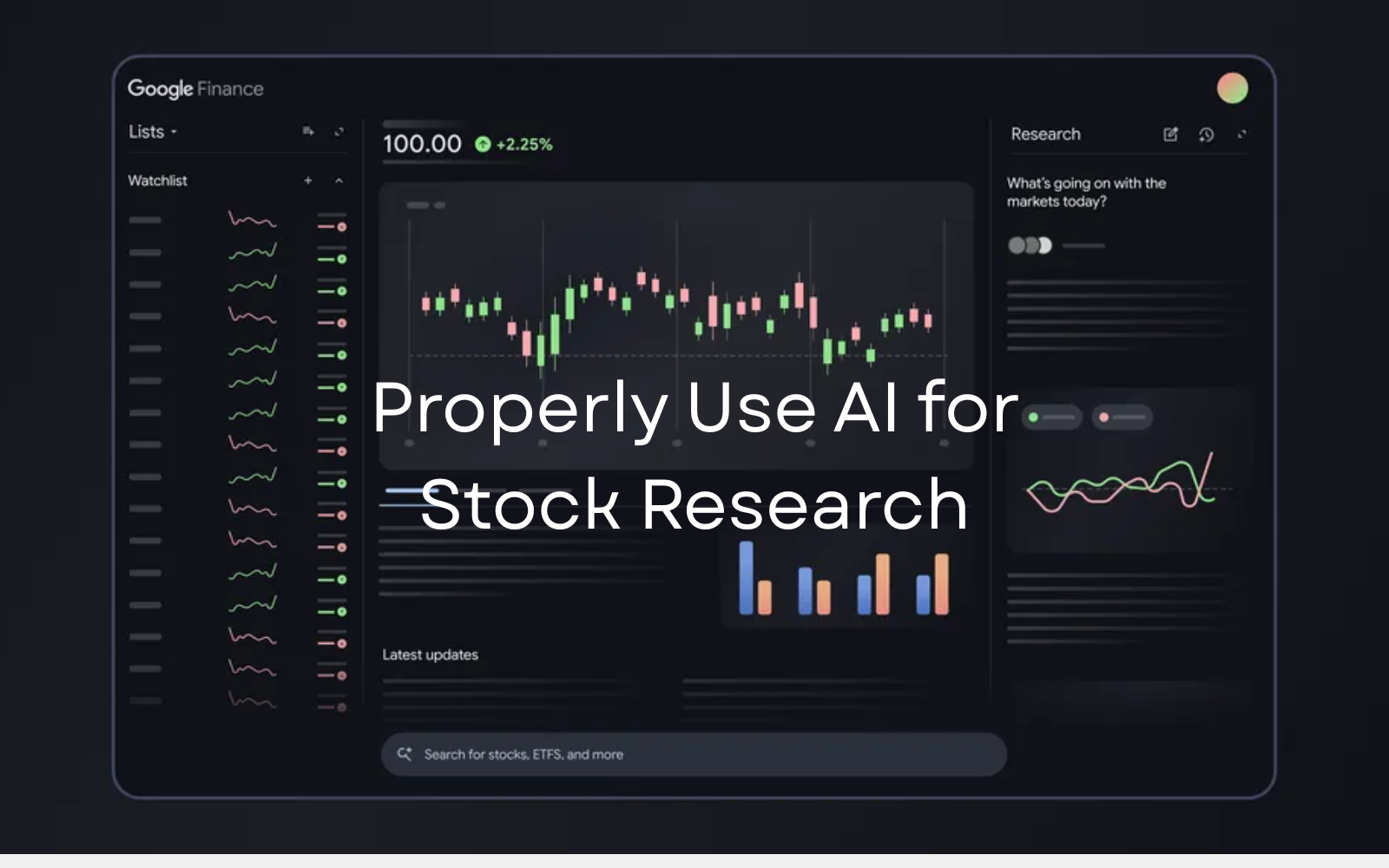Properly Use AI for Stock Research

The AI-Powered Investor: A Guide to Stock Research and the Primacy of Data

Artificial intelligence is no longer a futuristic buzzword in finance; it is a present-day reality, rapidly moving from the exclusive domain of high-frequency trading firms to the desktops of everyday analysts and investors.
But as with any powerful new tool, the predominant question is not if you should use it, but how.
Too many investors approach generative AI like a magic 8-ball, asking it to "predict the next hot stock" or "tell me if I should buy Apple." This is not just a flawed approach; it's a dangerous one.
The proper way to use AI in stock research is to stop treating it as an oracle and start treating it as the most powerful, tireless, and data-driven junior analyst you've ever hired. Its job is not to give you answers; its job is to process, analyze, and summarize the mountains of data you need to find the answers yourself.
The Golden Rule: Garbage In, Garbage Out (GIGO)
Your AI model's insights are only as good as the data you feed it. This is the primacy of data. An AI, at its core, is a pattern-recognition machine. If you provide it with low-quality, out-of-date, or incomplete data, it will confidently—and incorrectly—find patterns in that "garbage."
In investment research, data is the fuel. AI is the engine. A Formula 1 engine (the AI model) is useless if you fill the tank with dirty water (bad data).
This is where AI's true power lies: its ability to analyze two distinct types of data at a scale no human can match.
1. Structured Data (The "What")
This is the world of spreadsheets and databases:
- Financial statements (Income, Balance Sheet, Cash Flow)
- Historical price and volume data
- Economic indicators (inflation, unemployment, etc.)
2. Unstructured Data (The "Why")
This is the messy, human-generated world that accounts for over 90% of all enterprise data. This is where AI truly shines.
- Earnings call transcripts and management interviews
- SEC filings (10-K, 10-Q), especially the "Risk Factors" and "MD&A" sections
- News articles and press releases
- Social media posts and forum discussions (sentiment analysis)
- Regulatory filings and even satellite imagery (e.g., tracking parking lot traffic at a retailer)
A human analyst might be able to read one or two of these. An AI can read ten thousand in a second and tell you what it found.
A Practical Framework: Asking AI the Right Questions
To get actionable intelligence, you must move from "prediction" to "processing." Here are four practical, high-value ways to use AI in your research workflow.
1. The Summarizer: Conquering the 10-K
No one wants to read a 200-page 10-K. But this is where companies are legally required to disclose their weaknesses.
- Bad Prompt: "Is this company a good investment?"
- Good Prompt: "I've uploaded the last two 10-K filings for [Company X]. Analyze the 'Risk Factors' section from both. What new risks were added this year, and which risks were de-emphasized or removed?"
2. The Quantitative Analyst: Screening at Scale
AI can perform complex fundamental screens instantly, saving you hours of spreadsheet work.
- Bad Prompt: "Find me some cheap tech stocks."
- Good Prompt: "Screen the technology sector for companies with the following criteria: P/E ratio below 20, debt-to-equity ratio below 0.5, and year-over-year quarterly revenue growth above 10%. Present the results in a table."
3. The Qualitative Interviewer: Decoding Management-Speak
Earnings calls are a goldmine of qualitative data. AI can analyze the subtext and tone that a simple transcript misses.
- Bad Prompt: "Did [Company X] have a good earnings call?"
- Good Prompt: "Analyze the full transcript from [Company X]'s Q3 2025 earnings call. What was the sentiment of the analysts' questions? Did management's answers become more or less confident when discussing future guidance compared to past performance?"
4. The Comparative Analyst: Finding the Outlier
AI excels at finding the "odd one out" in a peer group, which is often the starting point for a great investment thesis (either long or short).
- Bad Prompt: "Who is the best auto company?"
- Good Prompt: "Compare the operating margins, inventory turnover, and free cash flow as a percentage of revenue for Ford, GM, and Toyota over the last 12 quarters. Identify any significant trend divergences between them."

